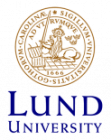Micropollutant removal at Sjölunda WWTP – bromate formation in ozonation and regeneration of activated carbon
During 2021-2022 bromate formation in ozonation and regeneration of activated carbon were investigated at Sjölunda wastewater treatment plant (WWTP) within a prestudy for a rebuild of the wastewater treatment plant in order to meet a growing population. The project was financed by the Swedish Environmental Protection Agency (Naturvårdsverket).
Previously, micropollutants at Sjölunda WWTP have been mapped and this study answers some supplementary questions that needed to be investigated before it is possible to choose a suitable process solution for micropollutant removal at Sjölunda WWTP. The aim of this study was to answer the following questions:
- Is ozonation a suitable technique for micropollutant removal at Sjölunda WWTP despite high concentrations of bromide in the incoming wastewater?
- Which PNEC value for bromate and citalopram should be used as basis for the evaluation of environmental risks?
- Can an ozonation plant be operated in a way that does not pose a significant risk to the environment regarding bromate concentration?
- How can the activated carbon in a GAK plant at Sjölunda WWTP be regenerated in an economically and environmentally sustainable way?
The main conclusions of the project are:
- Complementing ecotoxicological tests resulted in the lowering of the safety factor for bromate from 500 to 10. The highest concentration of bromate in the recipient that results in negative effects on the environment (PNEC) can thus be revised to 0.11 mg/l.
- Ozonation experiments have shown that effective removal of the investigated micropollutants can be reached with ozone doses that result in a bromate concentration of maximum 0.34 mg/l in the outgoing water from Sjölunda WWTP. With a dilution of 100 times in the recipient, this is well below the concentration that results in negative effects on the environment according to the tests in this study. Ozonation should therefore not be excluded as treatment technique at Sjölunda WWTP due to high bromide concentrations in the incoming wastewater.
- Complementing ecotoxicological tests resulted in the lowering of the safety factor for citalopram to 20 and PNEC can be revised to 7.5 ng/l.
- The climate impact for regeneration in an existing external regeneration plant was shown to be significantly higher than regeneration in a plant at Sjölunda WWTP or a regional plant. The transport to an existing plant in Germany or Belgium was shown to only be a marginal part of the climate impact.
- The study shows a potential so reduce costs for regeneration of activated carbon in a plant at Sjölunda WWTP or a regional plant compared to regeneration in an existing external plant.
The results are presented in more detail in the final report below (Swedish). The test reports from the complementing ecotoxicological tests for bromate and citalopram are available here:








